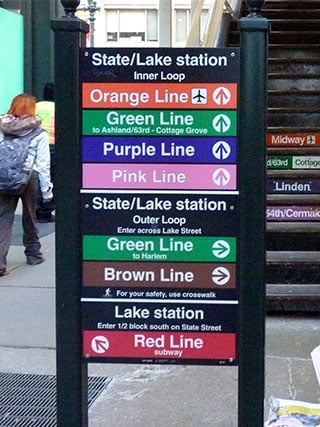Schwarz Wayfinding

What is Wayfinding?

Even a landmark or structure itself can serve as a wayfinder.
“Oh the places you’ll go!” Dr. Seuss taught us. But how do we know where to go? Wayfinding is a common problem solving practice architects consider and implement to get visitors from point A to point B in a logical, intuitive “way.” Street signs are a great example of wayfinding in our everyday lives.
As people find their way around spaces and places, they are always thinking: “Where am I?” and “How do I get where I want to go?” And their thoughts are answered by good, or by bad, wayfinding tools.
For example, imagine yourself entering a high rise building with the goal of finding a particular office. Right after you enter the building, the lobby’s signage should point you in the right direction for the elevator that takes you up to the right floor. Once you reach your floor, the signage in the hallway should direct you to the right office door, and then even once you’re inside the doors of the office, you should easily find your way to the reception area. It sounds simple, but have you ever entered a space and had no idea where to go? If so, you are experiencing bad wayfinding.
Through the use of text, graphics, or color markers, we’re able to follow wayfinding cues and almost instinctively know where we’re going. Every architect and city planner uses a unique system aligned with the nature of the area to provide an easy navigation pathway.
From a design standpoint, Mark A. Foltz at MIT suggests following these 8 principles for effective wayfinding:
- Create an identity at each location, different from all others.
- Use landmarks to provide orientation cues and memorable locations.
- Create well-structured paths.
- Create regions of differing visual character.
- Don’t give the user too many choices in navigation.
- Use survey views (give navigators a vista or map).
- Provide signs at decision points to help wayfinding decisions.
- Use sight lines to show what’s ahead.
There are many public spaces where public wayfinding is not only important but critical. Think about public transportation systems, airports, hospitals, schools, auditoriums, and even outdoor spaces. What are some of examples, good or bad, of wayfinding in your neighborhood? Does your local grocery store or mall have good wayfinding?
Share your wayfinding experiences — good and bad!


